When a tank needs replacing, it’s a big job. But Edward Wheeler, group managing director at Eurotank Service Group, believes forecourt operations should consider an upgrade instead with a tank lining system. He explains: "We can now offer a tank lining solution which is equal to new tanks in terms of the end result, while keeping you trading throughout the installation process. With medium-to-long-term uncertainty surrounding the future infrastructure requirements at petrol filling stations, it doesn’t make commercial sense to dig up and replace old tanks for new, while closing for business for three months plus and, at the same time, having to deal with the unknown cost of ground water and contamination."
Wheeler says the centrepiece of his company’s innovation is the Tank Entry Container, which is a modified 20ft shipping container. Inside the container are hazardous area lights, electrical sockets, explosion-proof CCTV monitors and heating.
The inside of the container roof provides two fall-arrest and recovery systems for working on two tanks at the same time, if required. The floor of the container is open to allow access into tank manholes, whereas the roof of the container is reinforced to provide two platforms for individual active charcoal filtration air scrubbers.
"The Tank Entry Container is designed to protect both the public and the site operatives from each other," says Wheeler. "The UK leads the world in health and safety, and we are confident that our process and site equipment are head and shoulders above anything else in Europe and globally, in terms of safety."
The Tank Entry Container also ensures a quality installation of the tank lining as the installation process is protected from rainwater, humidity and sunlight. "We use a UV light cure system to harden the resin and laminates in our Lifeliner system, which comes with a 30-year warranty. As the Tank Entry Container cuts out all natural light, there is no issue about resin starting to cure before we are ready."
smaller footprint
Wheeler adds that the Tank Entry Container also ensures a much smaller footprint to the installation process, with consumer vehicles and tankers able to drive up close to the container walls.
"This ensures that we can keep as much of the forecourt open as possible during installation."
Eurotank initially developed these systems for oil companies who were looking to use tank-lining systems, without compromising their safety culture and, at the same time, ensuring they weren’t creating a future problem when linings came out of short warranties or failed prematurely. "UK dealer petrol retailers can now also benefit from the same technology," says Wheeler.
Another company providing a tank-lining solution is TSG. Sales director, Steve Watts, says they use a patented mounting system. "The durable, leak protection lining provides years of protection for underground fuel storage tanks. Unlike traditional GRP lining, the Bladder Lining can be removed and reinstalled with the least amount of downtime and impact to your business, throughout its lifespan. Our tank lining solution is suited to situations where a tank leak has occurred; if an alternative new fuel is to be used; or if you wish to extend the life of a single-skin tank with the Bladder Lining system, forming a double skin with interstitial alarm monitoring. Our tank lining solution reduces costs, increases safety and provides long-term environmental protection for your fuelling site."
service partnership
Just recently, fuel analytics technology provider Leighton O’Brien and environmental risk reduction specialist Adler and Allan announced a new licensed service partnership to exclusively deliver EPA-certified precision tank and line testing technology in the UK.
Adler and Allan says its customers will benefit from the most accurate integrity test, which can detect ullage leaks equivalent to 0.09 litres per hour, making it four times more accurate than traditional leak detection thresholds. This allows customers to detect the smallest leaks, reducing the risk of fines and reputation damage.
The technology also benefits fuel retail customers by reducing forecourt downtime as the test is fully automated, optimising technician time onsite. The tank test time is one hour and seven minutes, three minutes for a dry line test and 17.5 minutes for a wet line test.
Leighton O’Brien’s global president of field technologies, Chris Cooper, says: "Modern fuel formulations are changing the rules for fuel retailers in terms of preserving the lifecycle of their storage tank asset. Major oil companies need to ensure the integrity of their fuel systems by testing with the best technology available and third-party review to ensure their tank systems are 100% tight, preventing water ingress that can cause biological activity, accelerated corrosion and contaminated product unfit for sale. This latest partnership expands our market coverage in the UK and builds on our growing global network."
early detection
Gilbarco Veeder-Root says that over recent years it has become standard practice to utilise secondary containment double-wall tanks and lines to ensure the integrity of the underground fuelling system and detect leakage before it escapes to ground. However, there are still many sites with older single-wall installations. With these, any breach of the containment system means fuel is immediately released to the environment, so early detection is imperative.
It can do this via its TLS4 Series tank gauge system, which is the first and only tank gauge system independently certified to European leak detection standards. The standard in question is EN13160, which is a multi-part standard that covers various types of detection equipment designed to detect leaks in single-wall tanks and lines or monitor the interstitial spaces of double wall systems. These standards are not law, however the BSI in the UK is expected to implement this as a national standard, which is why there are frequent references to EN 13160 in industry guidance, such as the APEA/EI ’Blue Book’.
The attainment of EN 13160 Part 5 certification for the TLS-4xx range of tank monitoring systems follows many months of testing, independently conducted by TÜV NORD, a leading European Notified Body based in Germany.
Gilbarco Veeder-Root says that choosing an approved system when replacing older gauging systems or installing for the first time does not add cost, it just adds the assurance that the system works and will detect leaks to a defined performance standard, for more peace of mind.
Case study: Fibrelite
As part of the refurbishment of Shell Fenstanton in Cambridgeshire, Shell required a retrofit watertight solution to replace previously installed brick chambers without replacing the tanks. The old tanks did not have an upstand, which made installation challenging, as bolt-down chambers could not be used.
Fibrelite’s UK engineering team created a bespoke chemical bonding system to attach GRP Fibrelite tank sumps to the old steel tanks, eliminating the need to replace them.
After bonding the collars to the tanks using an epoxy putty compound, Fibrelite laminated the chambers to the collars.
Preparation of the steel tanks and of the collars before bonding was key.
Bonding the chambers directly onto the existing tanks saved Shell time and money on installation while providing a fully watertight chamber system, which will endure year after year. The site team conducted a vacuum test onsite after the install to ensure water tightness of the chambers.


















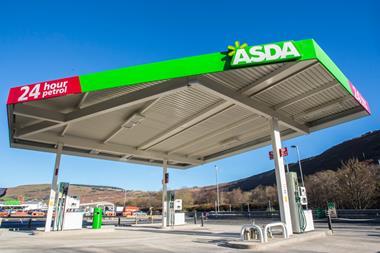

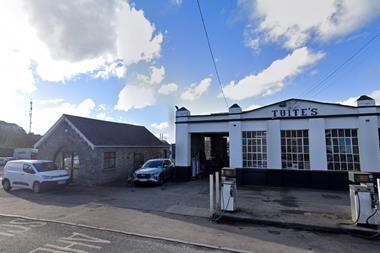
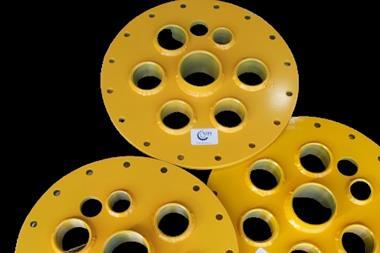
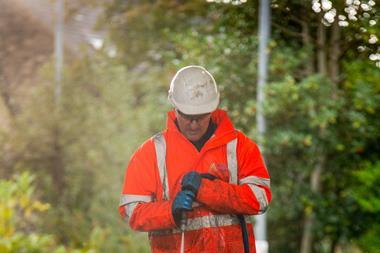


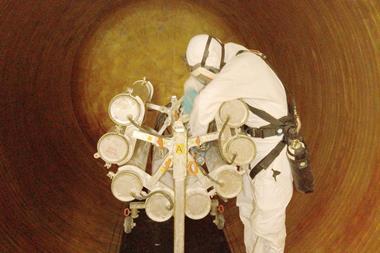
No comments yet